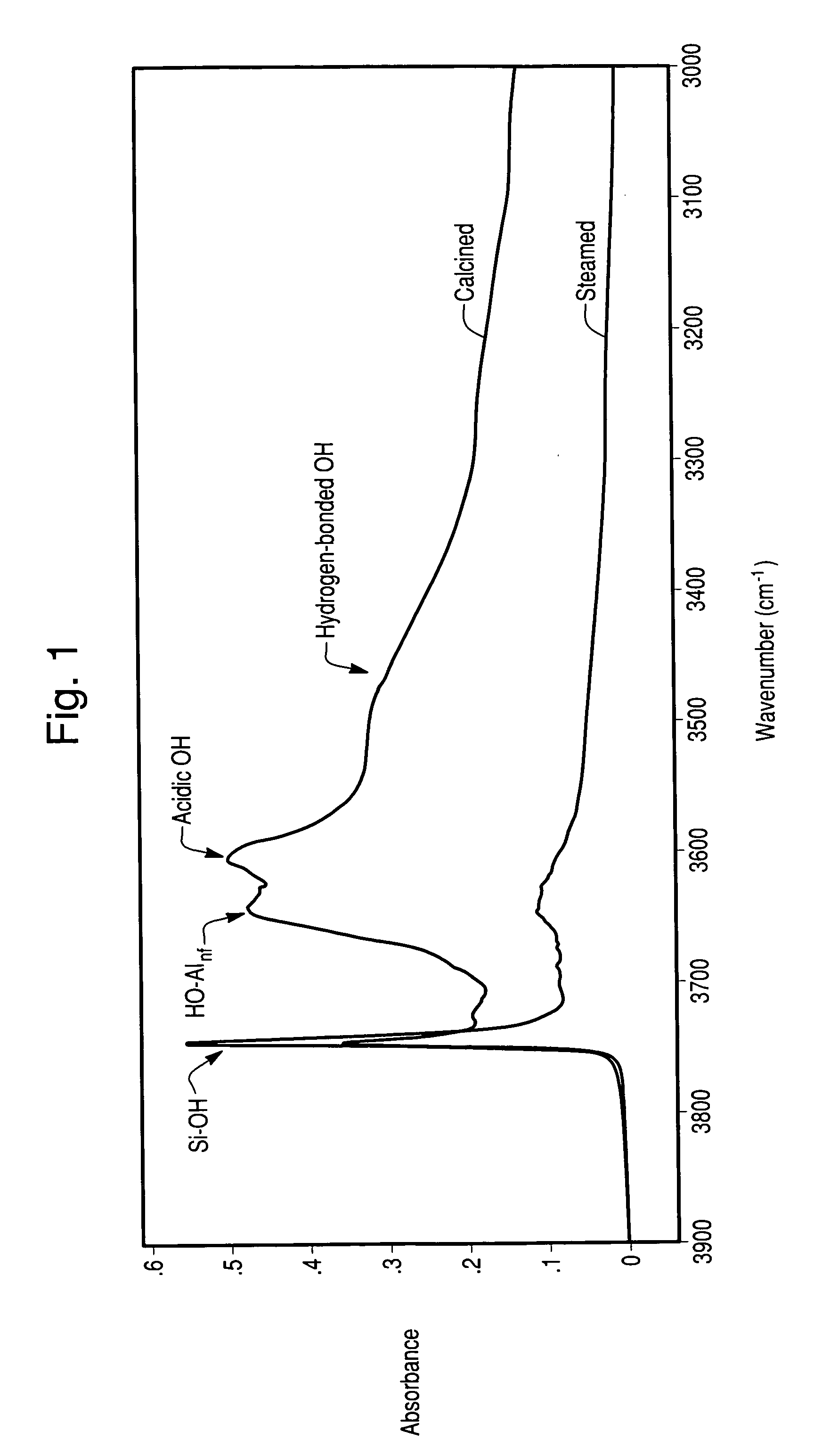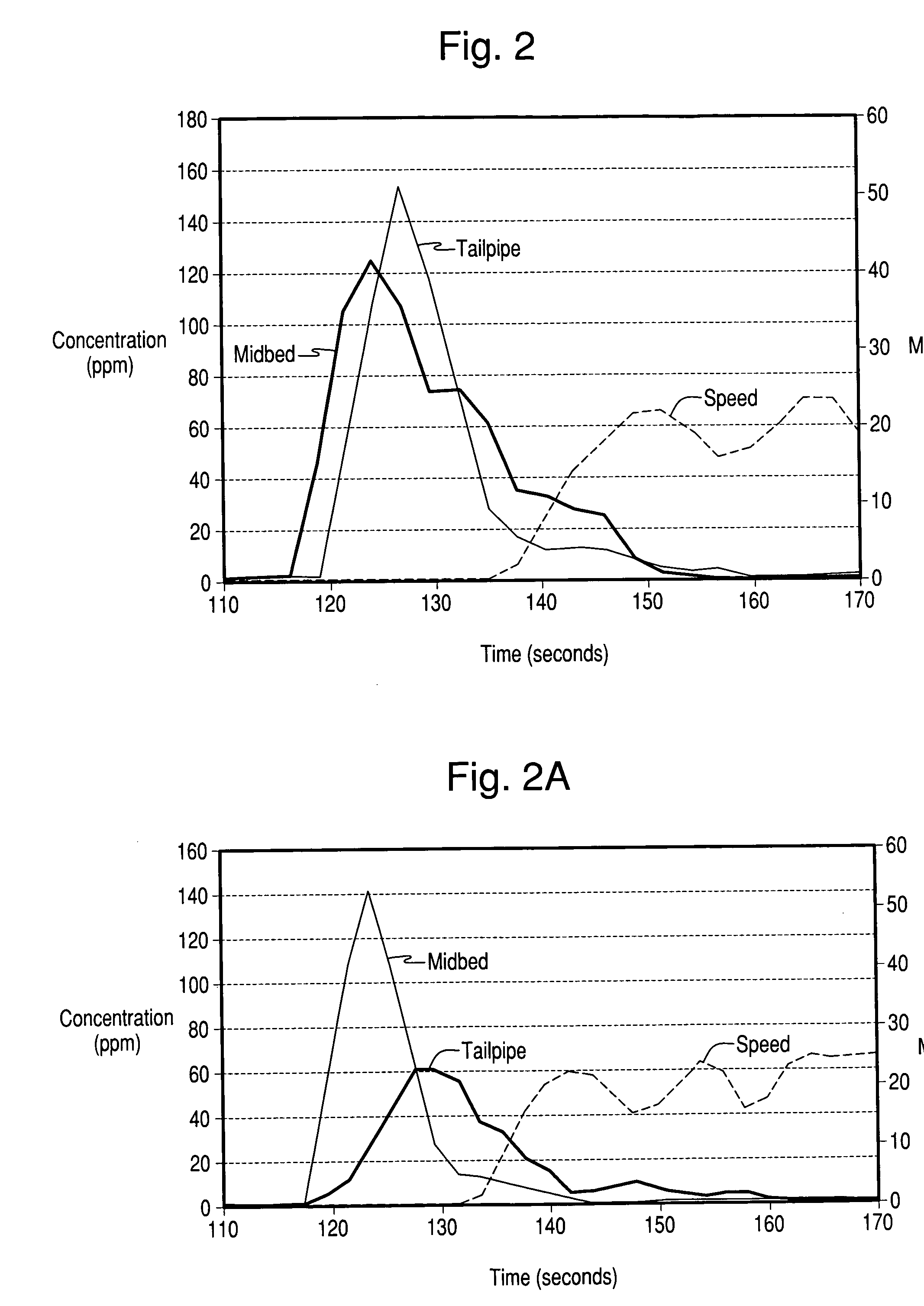Hydrothermally stable Ag-zeolite traps for small olefin hydrocarbon molecules
a hydrocarbon and zeolite technology, applied in the direction of organic compounds/hydrides/coordination complexes, physical/chemical process catalysts, separation processes, etc., can solve the problems of low efficiency of conversion of pollutants, especially hydrocarbons, and perceived need to segregate catalytic components, etc., to achieve high temperature steaming and improve hydrothermal stability
- Summary
- Abstract
- Description
- Claims
- Application Information
AI Technical Summary
Benefits of technology
Problems solved by technology
Method used
Image
Examples
example 1
[0034] 30 grams of the following zeolites in NH4+ form including: Ferrierite, mordenite, ZSM-5, and Beta, were steamed at 500° C. for 4 hours with 10% steam in air. 10 grams of the steamed zeolite samples were ion exchanged with silver according to the procedure as set forth below in Example 2.
example 2
[0035] 17 grams of Ag nitrate were dissolved in 500 ml of de-ionized water in a breaker under stirring at room temperature. After a clear solution was obtained, 23 grams of the NH4-formed zeolite powder of Example 1 were slowly added to the silver nitrate solution. The suspension was stirred at room temperature overnight (or for 5 h at room temperature). The stirring was stopped to allow the solids to settle. The top supernatant was poured off and the solids separated from the liquid by filtration.
[0036] The filter cake was washed with de-ionized water three times (200 ml water each time). The wet cake was dried in an oven at 100° C. Each zeolite sample contained 4-5 wt % Ag.
example 3
[0037] 2 grams of each of the Ag+ ion exchanged zeolites were steamed at 800° C. for 4 hours under 10% steam in air.
PUM
| Property | Measurement | Unit |
|---|---|---|
| Temperature | aaaaa | aaaaa |
| Temperature | aaaaa | aaaaa |
| Temperature | aaaaa | aaaaa |
Abstract
Description
Claims
Application Information
 Login to View More
Login to View More - R&D
- Intellectual Property
- Life Sciences
- Materials
- Tech Scout
- Unparalleled Data Quality
- Higher Quality Content
- 60% Fewer Hallucinations
Browse by: Latest US Patents, China's latest patents, Technical Efficacy Thesaurus, Application Domain, Technology Topic, Popular Technical Reports.
© 2025 PatSnap. All rights reserved.Legal|Privacy policy|Modern Slavery Act Transparency Statement|Sitemap|About US| Contact US: help@patsnap.com



